Shining bright with a mesmerizing beauty, April’s birthstone has long been a sign of love, strength, commitment, and luxury, yet when looking behind its stunning appearance, unveils a cruel, ugly reality. From social and environmental sustainability, mined diamonds have a much higher cost morally when looking at their (un)ethical and environmental impact. So what the true cost of mined diamonds? and why lab-grown diamonds the only real ethical and sustainable option? keep reading.


Akind rings (more about them below). All Photography by the lovely Ksenia Poliak, Cruelty-Free & Vegan Makeup by my wonderful Paula Fay (Both Via Lumo Creative Studio)
The Problems With Mined Diamonds
Human Rights
Blood diamonds, otherly known as conflict diamonds, are, according to the UN, any diamond that is mined in areas controlled by forces opposed to the internationally recognized government of a country and that is sold to fund military action against that government. Blood diamonds came into the worldwide spotlight in the 1990s, after three events in Angola, Democratic Republic of Congo, and Sierra Leone were found to do exactly that.
Following those events, and in order to try to prevent blood diamonds from entering the market, the UN developed The Kimberley Process (KP): a process allowing to trace and certify gems as conflict-free. While the KP has been a helpful improvement, it has been widely criticized for legitimate reasons, as it isn’t really solving the problem. With its narrow terms of certification and without addressing broader issues around worker exploitation – the health and safety of working conditions, the use of child labor and fair pay, The Kimberly Process is not offering a broad view of ethics. Moreover, the process does not apply to an individual stone but to a batch of rough diamonds, which are then cut and shipped around the world. Without a tracking system, this is where the trail ends, not allowing us to know the actual journey of an individual diamond. Even when following the Kimberley Process Certification, there is no proof that these diamonds are in fact conflict-free.
Risking their lives on a daily basis, working in very unsafe conditions with vulnerability to disasters such as mine collapse without any protective equipment, being shot, beaten and exploited: this isn’t a description of a horror movie, but of the horrifying reality of diamond diggers, who often earn less than $1 daily. This industry causes 1 injury for every 1000 workers annually.


Child Labor
Children are often viewed as a source of cheap labor in the mining industry. An estimated 215 million children are working in exploitative conditions, and of that 115 million are working in hazardous conditions. As if it wasn’t enough, over 32,000 children die from hazardous working conditions each year. According to the ILO, Children from the age of 4 (!) are exploited in the mining industry, forced to enter narrow mineshafts and descend into pits, as their small bodies allow it. Required to spend 10 or more hours a day in dark, cramped and dank mines filled with poisonous chemicals, children constantly risk fatal accidents due to falling rock, explosions, the collapse of mines walls and the use of equipment designed for adults. Since they cannot go to school, this job sets them up for unfortunate adulthood, as their bodies become physically handicapped, and their lack of education does not allow them to go to another job. But the exploitation of children does not stop in the mines: home to the largest diamond cutting and polishing operations in the world, 92% of diamonds are cut and polished in India. Unfortunately, because of their small hands and excellent vision, children as young as 6 are ideal candidates for cutting small stones.
Environmental Impact & Issues
Did you know that the average stone in an engagement ring is the product of the removal and processing of 200 to 400 million times its volume of rock? In order to find just one carat of diamond, approximately 200 to 250 tons of Earth must be sifted through using heavy machinery, causing a tremendous amount of fossil fuel to be released into the environment, deforestation, soil erosion, deterioration of water quality, biodiversity, and the overall health of aquatic life. Diamond mines require creating massive holes in the environment which are then left in the middle of communities, harming their habitat.
According to Frost and Sullivan, a mined diamond produces more than 125 pounds of carbon and 30 pounds of sulfur oxide for every single carat, requires about 126 gallons of water to produce and creates pollution in surface water. Moreover, for every mined diamond, there is on average 97 square feet of land disturbed.


There have been some positive developments in the field, with some initiatives (such as the Maendeleo Diamond Standards) and brands offering ethically-sourced and conflict-free mined diamonds, assuring their producers are protecting human rights and safe labor practices, however, they cannot eliminate the environmental impact of the need to dig large holes in the ground, land disturbance issues, water waste and the potential risk in the process of diamond mining, which is not ideal ethically.
Going through the (lack of) ethics and sustainability in the diamond mining industry and discovering plenty of “grey areas” made me wonder if there are any alternatives to these beautiful stones, and that’s when I came across lab-grown diamonds. We are not talking about fake diamonds here (like zirconia, for example). These lab-grown diamonds are real diamonds!
Place a natural diamond beside a lab-grown one, and you won’t be able to tell the difference. There is no chemical, physical or optical difference between them, however, there are many differences in the way they are formed, priced and their affect on people and planet in terms of ethics and sustainability. Here’s why lab-grown diamonds are in fact the only ethical and sustainable option out there (apart from vintage/second-hand diamonds, of course).
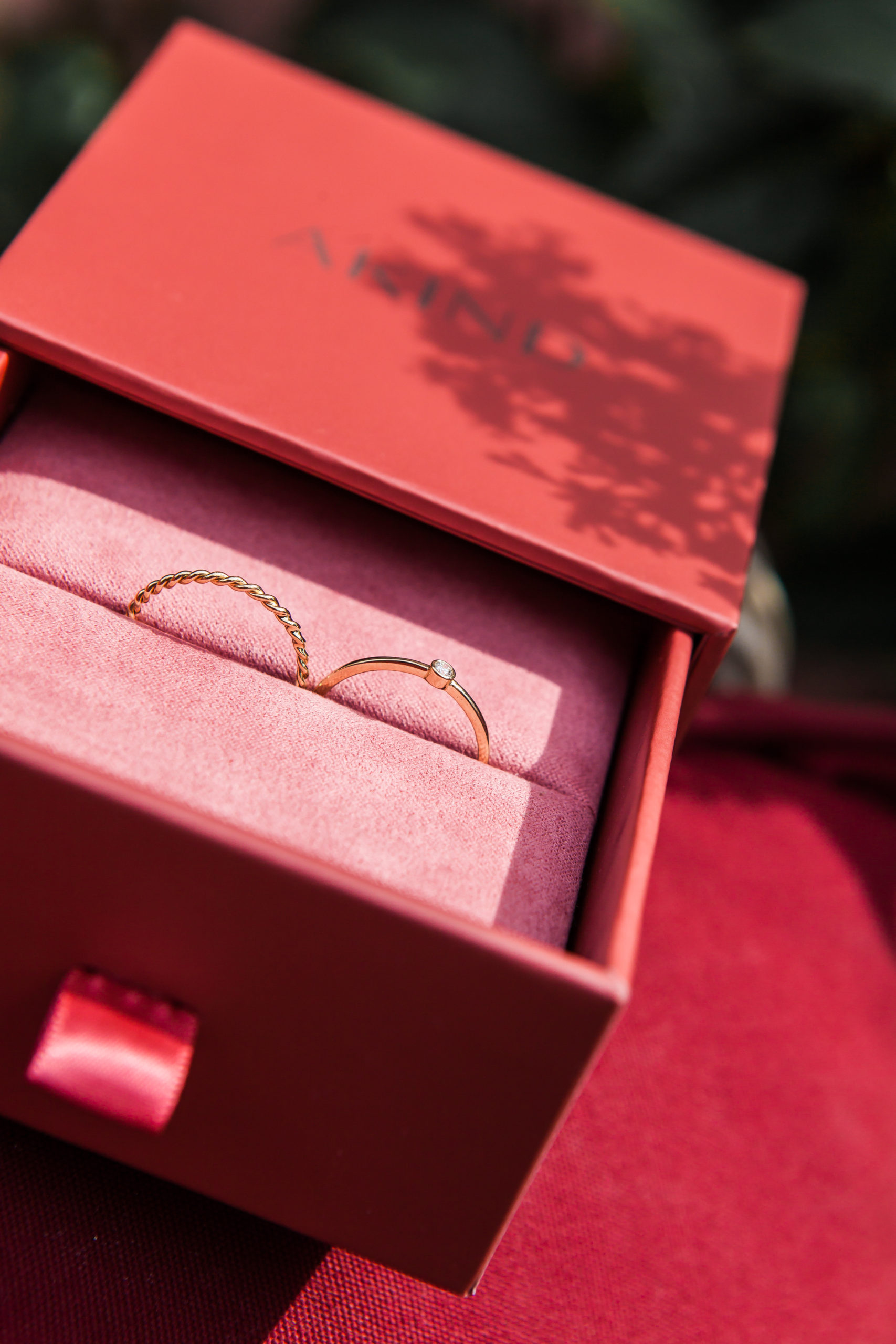

Why Lab-Grown Diamonds Are The ONLY Ethical & Sustainable Choice Out There
Lab-grown diamonds are formed in a controlled environment in a lab instead of in the ground. It takes the same amount of time to create a diamond crystal in both situations, but a mined diamond takes millions of years to reach the surface through volcanic eruptions. The bottom line is that a lab-grown diamond exhibits the same exceptional beauty and brilliance as a mined diamond because it is identical in composition to a mined diamond — that’s right, identical. Not similar. Not a fake. (source)
Lab-grown diamonds are produced in a controlled environment: There is a clear advantage to buying lab-grown diamonds with regard to safe working conditions: there are no miners or dangerous work involved. In fact, the only true way to know that you’re investing in a conflict-free, ethically produced diamond is by purchasing a lab-grown diamond: you never have to wonder if a person risked his life to create your engagement ring or polish your diamond.
When looking at ethics, as always, it comes down to the producer: always make sure the lab-grown diamond you want to purchase was made under fair labor practices, where employment is freely chosen, there’s no exploitation or child labor and there are reasonable working hours and fair wages.
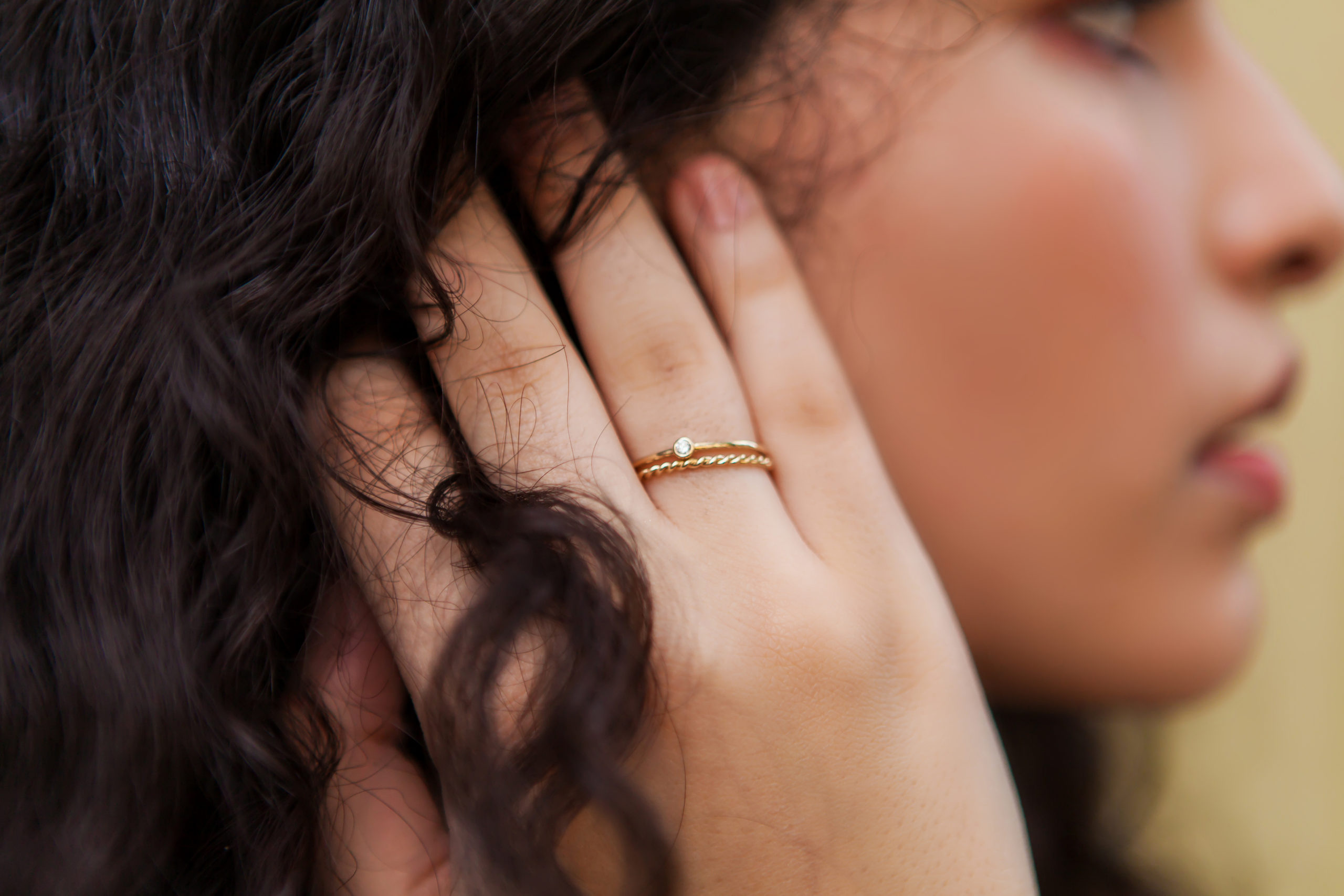

Lab-grown diamonds are more sustainable: the only resource needed to produce lab-diamonds is electricity — which can come from renewable sources. The process of creating diamonds in the lab used to be much more carbon-intensive than it is today, thanks to advances in technology and the new creation process known as CVD, which is much less energy-intensive than the old methods of using high pressure and high temperature.
While mined diamond consumes more than 126 gallons of water per carat and produces 125 pounds of carbon for every single carat, a lab-grown diamond consumes just 18 gallons of water and emits 6 pounds of carbon for a single carat- 4.8% of what mined diamonds produce. Energy-wise, mined diamonds use 538.5 million joules per carat, while grown ones use 250 million. In total, air emissions on a single carat of a mined diamond are 1.5 billion times higher than those of a lab-grown one. Replacing this one mine’s annual diamond production with lab-diamonds could save the equivalent of about 483 million miles’ worth of auto emissions!
Lab-grown diamonds are more affordable: Due to the way a lab-grown diamond is produced (with a much shorter, less complex supply chain than a mined diamond) the cost can be 20 to 40 percent less than a similar mined diamond, meaning that the sustainable option wins even when it comes to your pocket. Yay for that!
Brand Focus: AKIND Jewelry
Sweden-based AKIND is a new jewelry brand I came across not so long ago: with ethical and sustainable production being in their core ethos, AKIND only partners with factories committed to exceptional craftsmanship and ethical methods. Committed to using 100% recycled gold and lab-grown diamonds, Akind jewelry is luxury at its best with honest and transparent pricing.
Designed in Stockholm with the timeless, delicate and minimalistic Scandi influences from home, AKIND’s jewelry is made to last forever and even comes with a lifetime warranty. “We believe people are wanting a piece of gold that lasts forever, as opposed to buying fashion jewelry that they’d throw out in a few years, and so all of our products are designed and handcrafted with the utmost attention to detail and precision,” said Anna, Founder of AKIND.
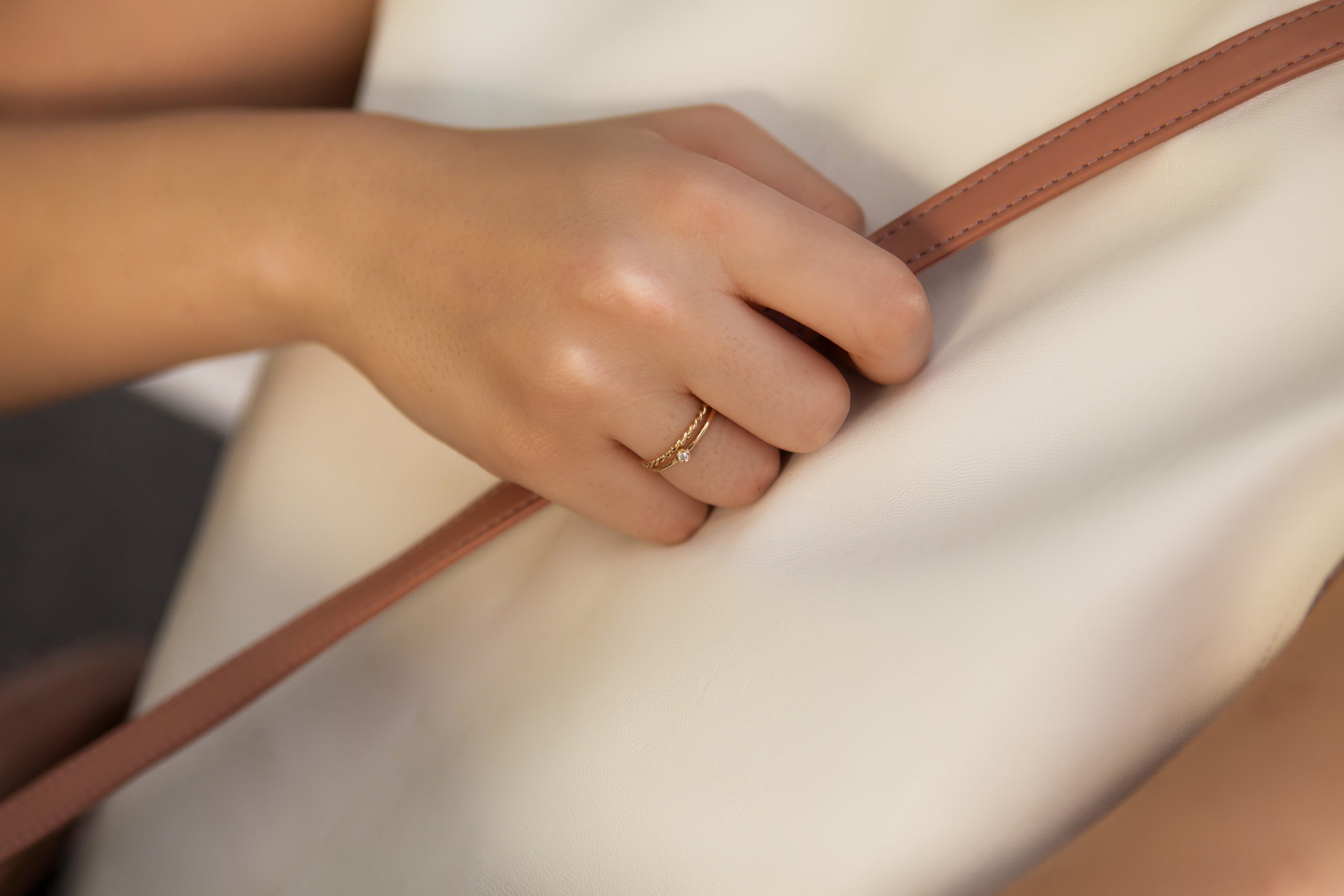

Recycled Gold & Lab Grown Diamonds
“For us, the quality must be exceptional, but never at the expense of our environmental and ethical principles”, said Anna. That’s why AKIND chose to use materials that are not destroying nature, but rather preserving what’s already there.
For their sparkly, luxurious jewelry, AKIND chose to use lab-grown diamonds that they source from ethical companies. “We are mainly purchasing our diamonds from a US-based company called Diamond Foundry. We’re in fact launching our partnership with them very soon with regards to a new collection we’ll release called ‘Special Occasion”. Their lab is 100% hydro-powered, meaning zero emissions, and their energy is renewable” Anna kindly shared with me. “Our other supplier is based in the Antwerp and they’re sourcing their diamonds from a certified network of several different labs”. As for the technique of production, most of AKIND’s diamonds are made by CVD, which produces less energy, but their the black diamonds are currently produced by HTHP, which requires more energy, but still, way less than mined diamonds. “we are not perfect, but we constantly work toward reducing the footprint we leave behind”.
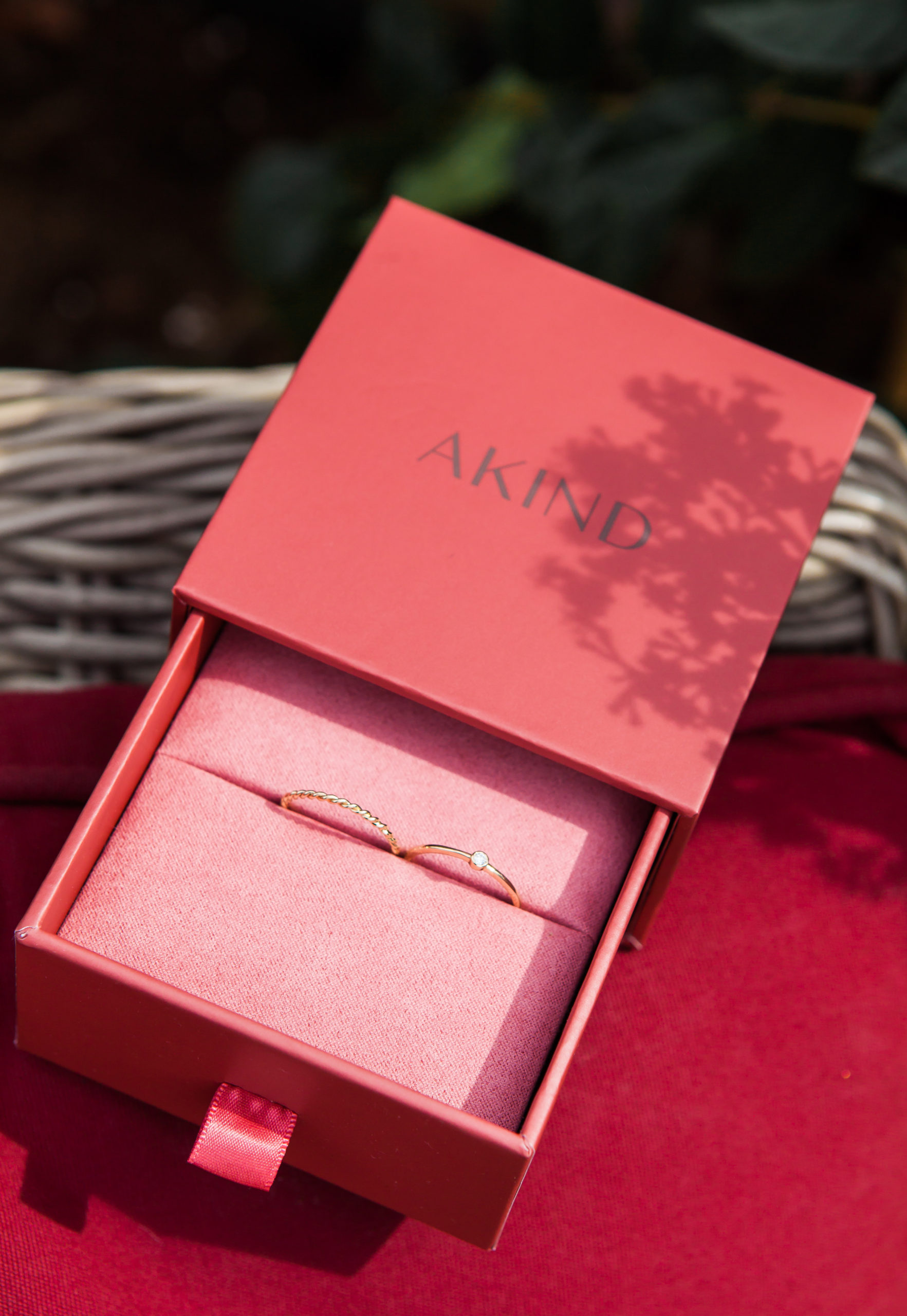

By using 100% recycled 14k solid gold, AKIND doesn’t only ensure having a lower impact on the environment and also everlasting quality, as their pieces won’t ever oxidize or discolor. 14k gold is known for its hardness and durability and since I own a few 14k gold pieces for years, I know my AKIND rings will be with me forever.
Wondering who made your AKIND jewelry? located in Andalucía, Spain, AKIND’s jewelry is fairly and lovingly handcrafted by a third-generation family business, who are experts in the field of delicate gold jewelry craftsmanship. AKIND team has a great and close relationship with their factory and workers, and as part of their transparency commitments, they often bring the stories of the people behind their jewelry to the front. Seeing the people behind my jewelry made me love and appreciate the brand even more!
AKIND kindly gifted me two rings from their collection: the timelessly beautiful twist ring and mini diamond ring, which features one, dainty 0.04 ct sustainably-grown lab-diamond. This duo is a match made in fair-fashion heaven, as they look so beautiful- especially when staked together.
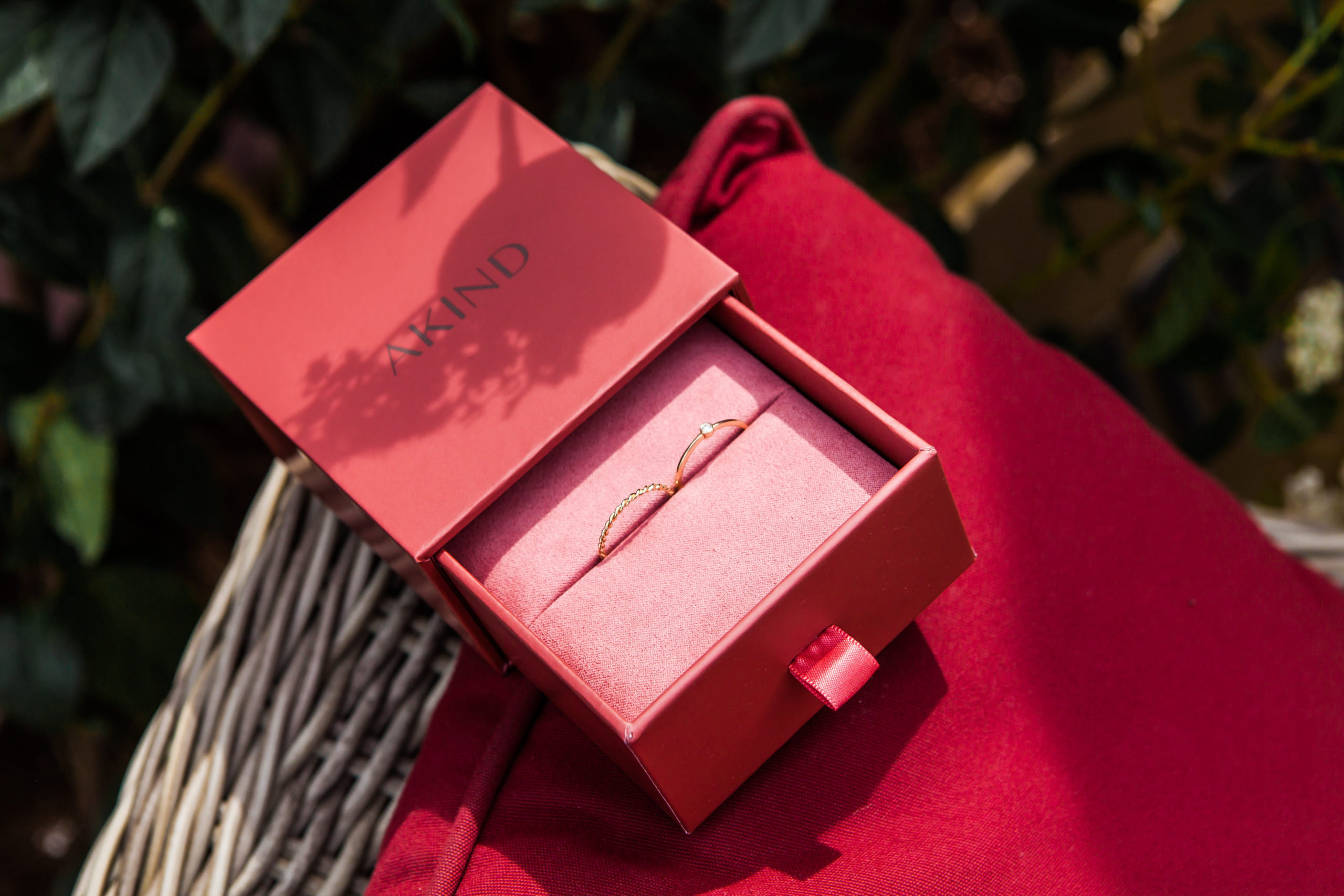

Do you own jewelry with lab-grown diamonds? if you don’t (and even if you do!) I hope this post helped you understand the world of ethics and sustainability in the diamond industry a bit more 🙂 Let me know your thoughts around this subject below!
What I’m wearing:
Rings by AKIND*
Cami by SANKAI *
Necklaces by Loft & Daughter*
All Photography by the lovely Ksenia Poliak, Cruelty-Free & Vegan Makeup by my wonderful Paula Fay (Both Via Lumo Creative Studio)
For more outfits, inspiration, and updates follow me on Instagram, Facebook, Twitter, Pinterest and Bloglovin‘
Love what I am doing? if you find my work somewhat valuable, please consider supporting me through my Ko-Fi page 🙂 I invest a lot of time researching, writing and building a community, and your support would mean a lot!
Until next time,
Noa
*This post is not sponsored. AKIND kindly gifted their rings and I decided to feature them. Please note, items marked with (*) were kindly gifted to me. All the opinions shared are mine. To read about my work ethics, visit my ethics page.

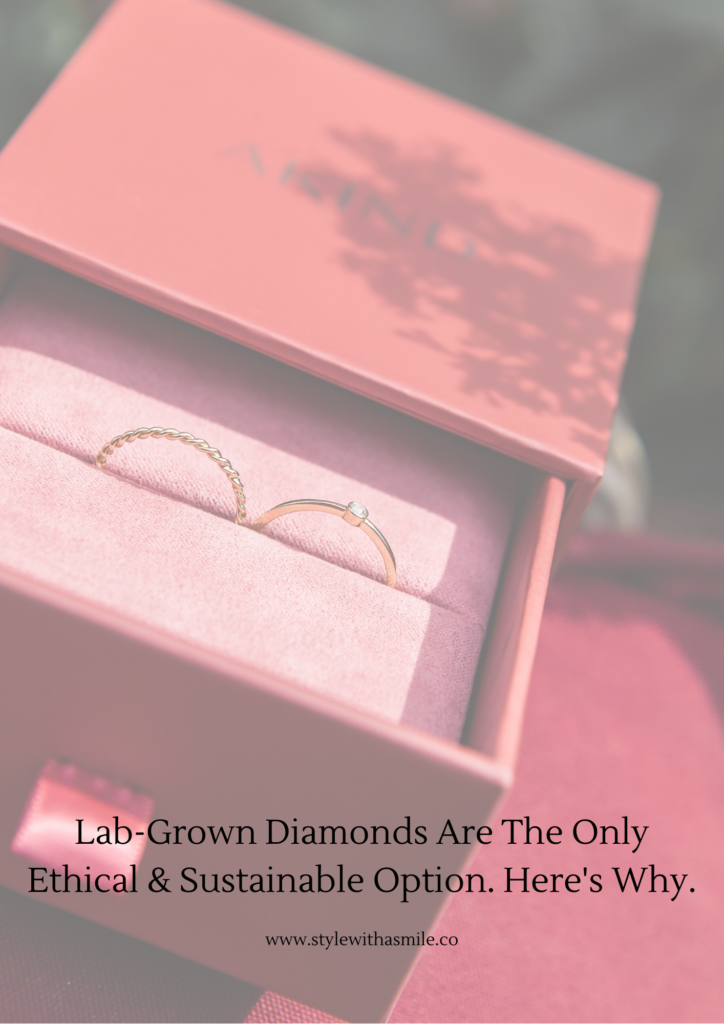
Pingback: Learn How YOU Can help the fair Fashion Movement NOW (+ Wonderful Initiatives to Support!) - Style with a Smile